A Wealthsimple TFSA can help you meet your retirement goals while also saving on taxes and fees.
Investing for retirement is generally a lifelong journey; however, high investment costs can make your journey to financial freedom even longer. Or worse, the excessive fees you have paid over the years may hinder you from reaching your retirement income goals.
This fee example provided by Vanguard drives the point about the impact of investment fees on returns.
If you invest $100,000 at a 6% annual return for 25 years and zero fees, you will end up with $430,000. On the other hand, if you paid 2% in fees on the same $100,000 and earned 6% every year for 25 years, your net worth ends up being a very diminished $260,000.
The fact is that fees matter.
Wealthsimple TFSA Account
A Wealthsimple TFSA account lets you invest your annual TFSA contribution limit using a portfolio that matches your investment needs and risk tolerance.
You can choose from a conservative, balanced, or growth portfolio. Socially responsible investing and Halal options are also available.
How a Robo-Advisor Can Help
Self-directed investors can lower their investment costs by using an online discount brokerage to build and manage their portfolios.
However, not everyone has the know-how or confidence to set up a globally diversified portfolio, buy and sell investment securities, rebalance their portfolio and stay calm when the markets go awry.
This is where robo-advisors like Wealthsimple come into play. They simplify the investment process so you can sit back and relax.
Not only that, but they also charge a significantly lower fee compared to what you would pay a full-service investment advisor or your bank’s mutual fund manager.
When you compare your total robo-advisor costs (~0.70%) vs. the average mutual fund MER (~2%), you are saving roughly 1.30% in fees every year.
This is not insignificant, especially on larger portfolios. On a $100,000 account, you are easily saving $1,300 every year.
Robo-advisors offer a variety of accounts you can invest in, including TFSA, RRSP, RESP, RRIF, LIF, and non-registered investment accounts. They provide you with a customized portfolio that reflects your risk tolerance and investment objectives.
I consulted with Michael Tempelmeyer, who is a senior investment manager at Wealthsimple, on what investors should consider when thinking about asset allocation for their portfolios.
There are 3 main things to consider when deciding how much risk to take in a portfolio:
- How long do you plan to have the money invested?
- How much risk you are comfortable with, which is another way of saying how much potential downside exposure you are willing to have.
- What type of long-term average annual return do you want to try to generate?
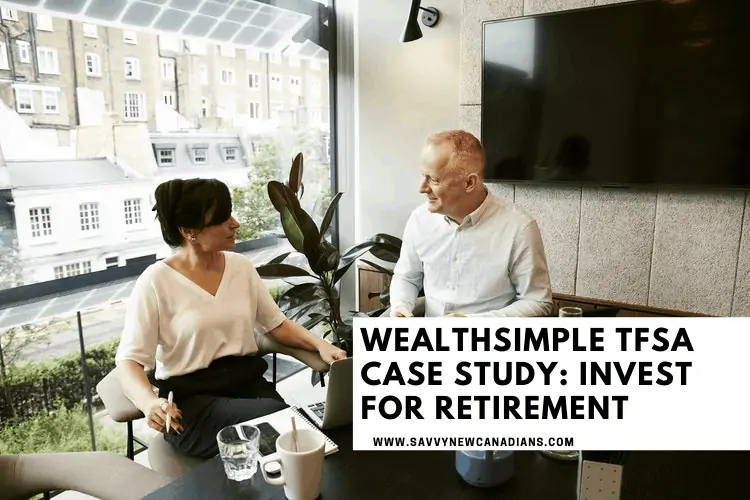
Wealthsimple TFSA and RRSP Investing
In your accumulation phase, an RRSP and TFSA are two of the most important accounts you should consider for growing your retirement pot.
Here are Michael’s thoughts on the popular TFSA vs. RRSP conundrum:
Using an RRSP to save for retirement makes sense when all of the following are true:
- You don’t plan to access the funds until retirement.
- You anticipate a lower or similar average tax rate in retirement than in your working years.
- You have enough earned income in the current year for the tax deduction to make sense. It generally starts to make sense when earned income is over $50k and makes more and more sense as your income level increases from there.
- You have the available contribution room.
And, for the TFSA:
Using a TFSA to save for retirement makes sense when any of the following are true:
- You may need to access the funds prior to retirement.
- Your current annual income is below $50k.
- You anticipate a high tax rate in retirement.
- You have already maxed out your RRSP contribution limit.
Retirement investing is not limited to these two accounts. If you have already used up your RRSP and TFSA contribution rooms, you can continue to invest by using a taxable investment account.
A maxed-out RRSP and TFSA is a great situation to be in. However, what happens if that’s impossible and you only have funds to contribute to one account?
The folks at Wealthsimple offer free expert financial advice, and they can help you decide on what’s best for your financial situation.
How To Invest For Retirement Using a Wealthsimple TFSA
Based on the questions I have received from readers of this blog, here are some of the reasons why some of them are using a TFSA to invest for retirement:
1. No earned income: Your RRSP contribution room is based on your taxable income. However, you can contribute funds from any source to a TFSA.
2. Avoiding the Old Age Security (OAS) clawback: RRSP withdrawals are taxable income and can result in your total income reaching the threshold at which you start to lose OAS benefits (including the GIS).
3. Young people earning an entry-level wage: A low tax bracket means a lower tax deduction is available when you contribute to an RRSP.
4. Investing after turning 71: You can continue to invest in a tax-sheltered account after age 71 without needing to make minimum withdrawals. An RRSP must either be terminated and withdrawn as cash or converted into an RRIF/annuity after age 71.
5. Maxed-out RRSP account: They have used up their RRSP contribution room.
A Wealthsimple TFSA Case Study
If you do not already have a TFSA and you have been a resident in Canada and over the age of 18 since 2009, you have $95,000 worth of available TFSA contribution room, up to and including the calendar year 2024, that you can use:
- $5,000 each in 2009, 2010, 2011, and 2012
- $5,500 each in 2013 and 2014
- $10,000 in 2015
- $5,500 each in 2016, 2017, and 2018
- $6,000 in 2019
- $6,000 in 2020
- $6,000 in 2021
- $6,000 in 2022
- $6,500 in 2023
- $7,000 in 2024
Over 75% of Wealthsimple clients have a TFSA account. While the RRSP is the primary retirement savings account in the majority of cases, some clients use TFSAs as their primary retirement savings account because an RRSP doesn’t make sense for them.
The TFSA is widely misunderstood and is frankly misnamed (Tax-Free Savings Account).
Many people think of these accounts as savings accounts that pay a small amount of interest like a traditional savings account when the reality is that you can invest in the same types of investments in a TFSA that you can hold within an RRSP or taxable investment account (ETF’s, stocks, mutual funds, bonds, etc.). For this reason, it makes sense to think of a TFSA as a TFIA (Tax-Free Investment Account).
Below is an example of a Wealthsimple client who intends on using her TFSA to manage her retirement income in order to avoid the OAS clawback:
Colleen, a 44-year-old government employee, engaged Wealthsimple’s team of Portfolio Managers to review her projected retirement income situation. Colleen has a defined benefit pension plan through work. She generates a small amount of RRSP contribution room each year after her pension adjustment is accounted for, and with their guidance is prioritizing her TFSA over her RRSP.
Withdrawals from her TFSA can be pulled out tax-free in retirement, and her expected pension income combined with her government benefits will put her in a position where her Old Age Security (OAS) is at risk of being clawed back in retirement if she has any additional retirement income.
Colleen earns approximately $80,000, and her retirement income expectation is approximately $76,000 ($56,000 pension plus $20,000 CPP & OAS). Her marginal tax rate is approximately 30%, which is projected to be similar in retirement.
A case could be made for someone in a similar situation as Colleen to use an RRSP to a certain extent and delay their CPP income until age 70, but the current approach suits Colleen best from a tax-efficient cash flow standpoint, allows for greater flexibility, and does not impact her OAS payments. OAS claw-backs start to become an issue when the current retirement income is approximately $76,000 or higher.
Colleen is single and has designated a family member as the beneficiary of her TFSA. The transfer of assets from her TFSA to her beneficiary will avoid probate costs and will also avoid estate taxes that would be applicable had the funds been held within an RRSP/RRIF account at the end of life.
There are a number of important considerations when looking at retirement income planning, and each individual has different aspects that need to be considered.
It is strongly recommended that you review your particular situation with an advisor, ideally one who is a Certified Financial Planner (CFP®).
How To Transfer a TFSA Account to Wealthsimple
If you are thinking about saving on fees and taking advantage of the services that Wealthsimple offers, they have made the process a seamless one.
Transfers of accounts between institutions are always initiated by the receiving institution, so there is no need to contact your existing provider.
After you open a new Wealthsimple account and complete your profile, you will see an option to “transfer existing accounts” on the funding section of your account. You can easily set this up yourself online, or you can reach out to their support team, and they would be happy to help get things set up for you.
We also cover the account transfer fees that your other institution may charge so long as the account you are moving over has a $5,000+ value. Michael says.
Conclusion
Investing for retirement has never been easier or cheaper.
You don’t need to be fully knowledgeable about asset allocation or rebalancing to take advantage of lower investment fees.
A robo-advisor like Wealthsimple does all the work automatically behind the scenes and you can rest easy knowing that compounding interest is working on your behalf to grow your retirement savings.
Also, you don’t need to wait until you have a big chunk of cash to invest. A robo-advisor can invest whatever you have available…including your spare change!
Wealthsimple Invest

Professionally managed ETF portfolios
Multiple account types
Auto rebalancing and div reinvesting
Get a $25 bonus with a $500 deposit
If you have questions about your existing investments and would like to speak with a licensed portfolio manager before taking any steps, you can book a free 15-minute call. There is no commitment, registration, or deposit required.
Related: Wealthsimple Trade Review.
Wealthsimple TFSA Review
-
Ease of use
-
Fees
-
Account types
Overall
Summary
A Wealthsimple TFSA account can help you manage retirement income, save on taxes, and increase your returns. This Wealthsimple TFSA review covers what you need to know.

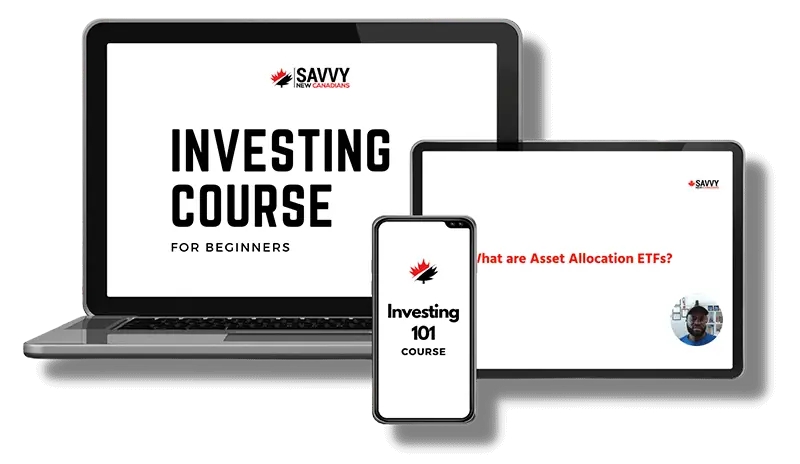
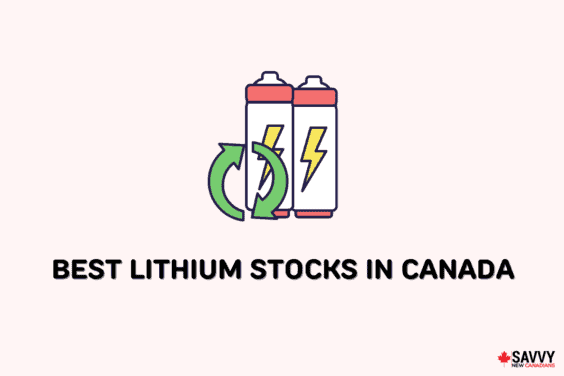
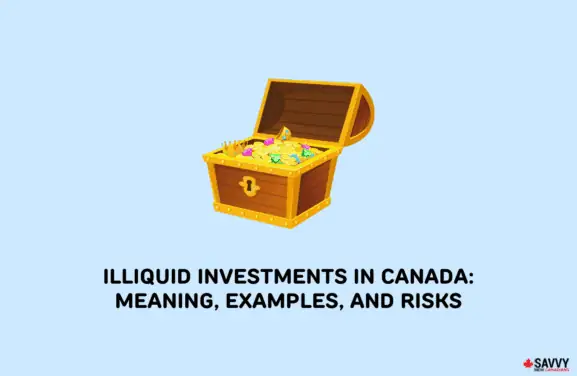
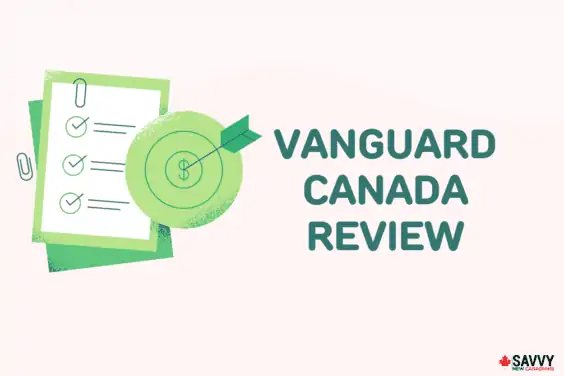
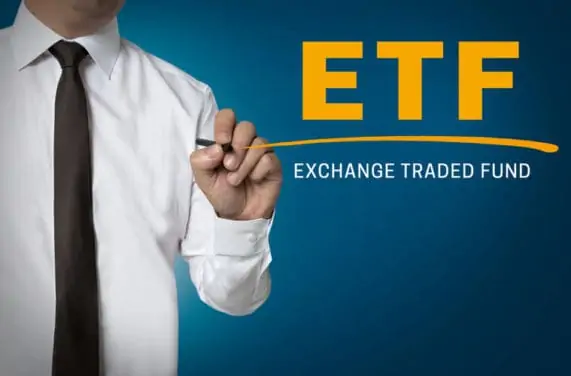
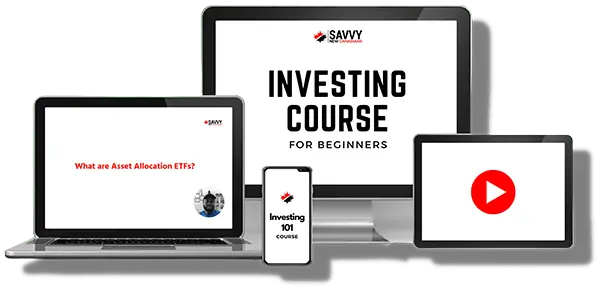

Good article, Enoch.
I opened a (new) TFSA with WealthSimple in February’18, out of curiosity really. I ‘d begun withdrawing from my RIF and wanted to get my feet wet with ETFs. I don’t have any complaints and I’m satisfied with the returns on my Balanced Portfolio.
If I was a young investor I might take a chance on WS, Questrade, or another Robo instead of going the Advisor/Mutual Fund route, although I have to admit I went through a couple of periods where I needed hand holding from a real person.
Finding a trusted advisor isn’t easy, especially if one has ”seemingly” been “burned” in the past. Many commenters to online investment articles are DIY investors who recommend avoiding Advisors at all cost but Advisors exist for a reason just as Brick and Mortar Big Banks still exist along with many fine, new, Online Banks.
@Tom: Thanks for your feedback!
You are definitely right about robo-advisors having their place. I know a lot of people who would rather buy high-fee mutual funds than attempt building their own portfolio with ETFs from scratch. And, they are pobably better off by doing that.
Robo-advisors can help to avoid making serious fundamental mistakes while still saving on fees.
Cheers,
Enoch
Is there any trading fee when purchasing a new ETF to the account as usually in any investment institution?
How much does it cost to open new accounts ?
How about the existing investment do you need to convert to ETF ?
ThNks for you comment